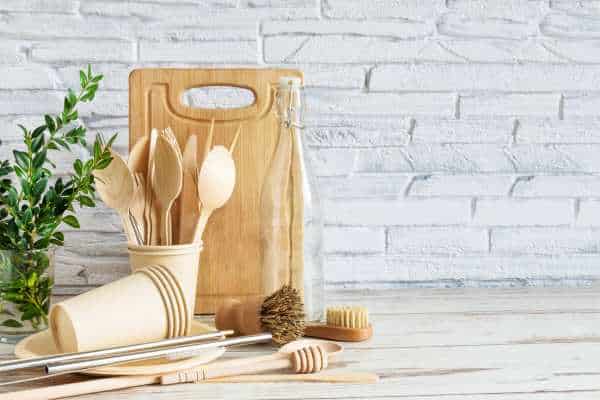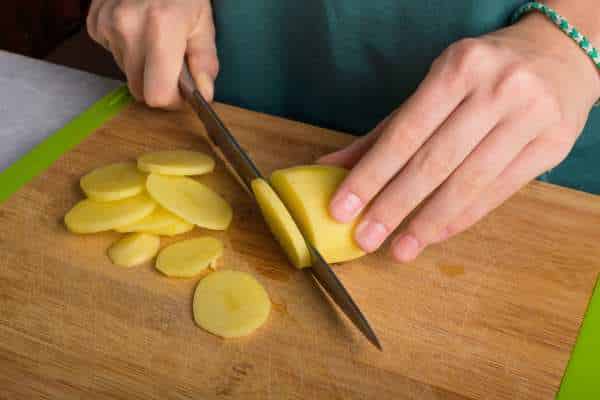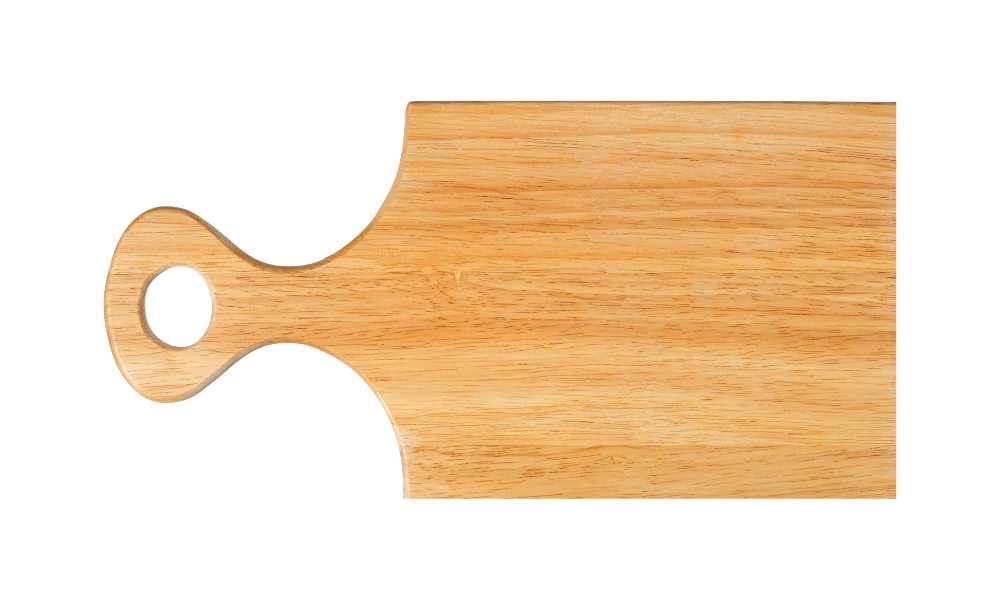Choosing the right type of wood for your cutting board is more than just a matter of aesthetics; it’s a crucial decision that impacts your board’s durability, hygiene, and even the sharpness of your knives. Hardwoods like maple, walnut, and cherry are popular for their dense and non-porous surfaces, which resist cuts and gouges, reducing the likelihood of bacteria buildup. Moreover, the choice of grain orientation—whether end grain or edge grain—plays a significant role in the longevity and maintenance of your cutting board. This guide delves into the best wood types for cutting boards, helping you make an informed decision tailored to your culinary needs and lifestyle.
Hardwood vs. Softwood

Selecting type of wood for cutting board, understanding the differences between hardwood and softwood is essential. Hardwoods, derived from deciduous trees, are denser and more durable than softwoods, which come from coniferous species. This density makes hardwoods ideal for cutting boards as they are less prone to scratches and gouges, offering a longer lifespan and better resistance to bacteria accumulation. Consequently, hardwoods like maple, walnut, and cherry are preferred for their reliability and longevity in kitchen environments, making them a superior choice for both amateur cooks and professional chefs.
Maple: The Standard Choice
Maple stands out as the quintessential choice for cutting boards due to its superior properties. Renowned for its tight grain and robust density, maple wood ensures a smooth, durable surface less prone to scratching or gouging. This resilience helps keep knives sharper for longer and minimizes bacterial retention. When compared to softer woods, which can deteriorate quickly under frequent chopping, or even harder woods that might dull knives, maple offers a balanced solution. Its natural resistance to wear and moisture makes it a top pick for both professional chefs and home cooks seeking reliability and long-term performance in their culinary tools.
Walnut: Aesthetic and Functional

Walnut stands out as an exceptional choice for cutting boards, not only for its striking dark color but also for its functional benefits. This type of wood enhances any kitchen with its rich, warm tones, making it a favorite among those who value both style and substance. The grain of walnut is uniquely tight, which helps prevent bacteria accumulation and makes it a durable option for frequent use. Additionally, walnut’s natural oils preserve its surface, reducing the need for frequent oiling compared to other woods. Opting for a walnut cutting board means enjoying a blend of beauty and practicality in your culinary endeavors.
Cherry: Durability Meets Beauty
Cherry wood combines durability with aesthetic appeal, making it a top choice for cutting boards. Renowned for its resilience, cherry withstands frequent use without compromising on quality. As it ages, this wood type enhances in appearance, with its rich, warm hues deepening, adding a touch of elegance to any kitchen. This characteristic not only boosts its visual appeal but also signifies the wood’s maturation and endurance. Opting for cherry ensures a cutting surface that remains beautiful and functional through years of slicing and dicing, embodying a perfect blend of form and function.
Bamboo: Eco-Friendly Option

Bamboo stands out as an eco-friendly alternative to traditional wood for cutting boards, renowned for its rapid growth and sustainable harvesting. This resilient material offers a harder surface, which is less prone to knife marks, thereby extending its lifespan. However, bamboo’s density can be harsh on knives, potentially dulling blades faster than softer woods. When considering bamboo, it’s essential to weigh these attributes against your culinary habits and maintenance preferences. Opting for bamboo can contribute to a greener kitchen, but understanding its characteristics ensures it meets your specific needs effectively.
Grain Types and Their Impact
Selecting the correct grain type—end grain or edge grain—is pivotal in crafting a cutting board that suits your kitchen’s demands. End grain boards are highly durable, naturally healing from knife cuts, which helps maintain their pristine condition longer. Conversely, edge grain boards offer a more cost-effective solution with sufficient durability for less intense culinary tasks. The orientation of the wood grain not only influences the longevity of the cutting board but also determines how knife-friendly and maintenance-intensive it will be. Understanding these impacts can guide you in choosing a cutting board that meets both your functional needs and aesthetic preferences.
Size and Thickness Considerations

When selecting the perfect wood cutting board, size and thickness play pivotal roles in its functionality and longevity. A board too thin may warp or split under frequent use, while excessively thick boards can be cumbersome to handle. Ideally, a thickness of about 1.5 to 2 inches provides ample stability without being too heavy, suitable for both everyday chopping and serving. Similarly, the board’s size should match the kitchen’s space and the user’s needs. Smaller boards are convenient for quick tasks, whereas larger ones offer extensive workspace for meal preps. Balancing these dimensions ensures your wood cutting board is both a durable and practical addition to your culinary toolkit.
Maintenance Requirements
Maintaining a wood cutting board is essential to ensure its longevity and performance in your kitchen. Regular cleaning with mild soap and warm water is crucial for removing food particles and preventing bacterial growth. Oiling the board periodically with food-grade mineral oil helps maintain its moisture content and prevents cracking. When storing, keep your board in a dry, ventilated area to avoid warping. By adhering to these care guidelines, you can protect your investment and keep your wood cutting board in optimal condition for years to come, regardless of whether it’s made from maple, walnut, cherry, or bamboo.
Health and Safety Aspects

Wooden cutting boards are not only preferred for their aesthetic appeal but also for their inherent hygienic qualities. The natural antibacterial properties of certain woods like bamboo, maple, and walnut help in inhibiting bacterial growth, making these boards a safer choice for food preparation. However, maintaining these boards is crucial; regular cleaning and proper drying are essential to prevent bacteria from settling into any cuts or grooves that may occur over time. This attention to care ensures that the antibacterial qualities of the wood are preserved, offering both safety and durability while you chop, dice, and slice in your kitchen.
Cost Analysis
Understanding the cost-effectiveness of various type of wood for cutting board can guide your purchasing decision. Hardwoods like maple and walnut may carry a higher upfront cost but are often more durable and longer-lasting. Investing in such quality woods ensures less frequent replacements, making them more cost-effective in the long run. Conversely, softer woods or bamboo might be initially cheaper but can succumb to wear and damage more quickly, potentially leading to higher costs over time. By choosing a durable hardwood, you not only enhance your kitchen’s functionality but also maximize the long-term value of your investment, balancing initial costs against the extended lifespan of your cutting board.
Conclusion
Selecting what type of wood for cutting board suits your kitchen, choosing a wood that balances durability, hygiene, and care requirements makes a difference. Hardwoods like maple, walnut, and cherry are top choices due to their density and natural antibacterial properties, keeping your food prep safe and your board long-lasting. Considering factors like grain type and thickness can enhance your board’s longevity and ease of maintenance. Ultimately, the right wood choice combines aesthetics with functionality, providing a reliable surface for all your culinary needs. Invest in a well-chosen wood cutting board, and enjoy a safer, more enjoyable cooking experience that stands the test of time.

